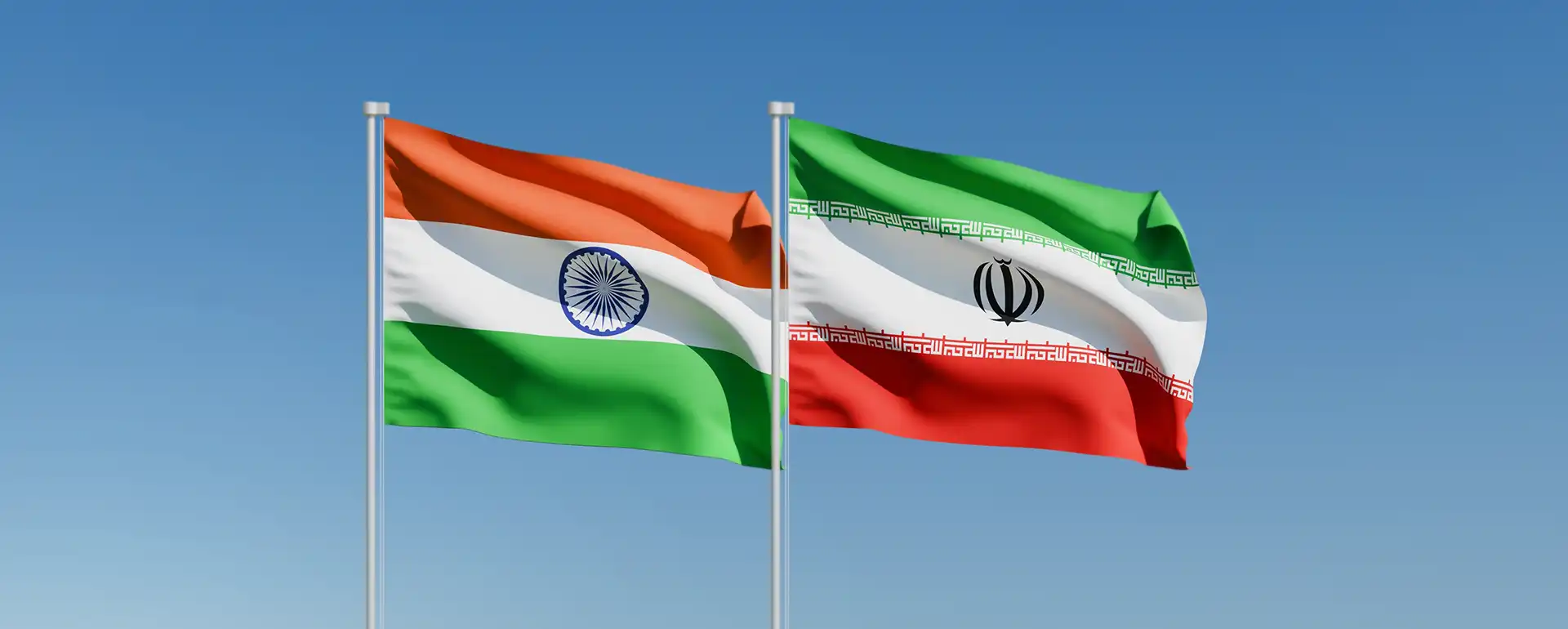
The essential traveler’s guide to understanding various types of visas
Whether traveling for business or pleasure, most travelers will, at some point, be required to obtain a visa. While they might be a hassle to apply for in many cases, visas shouldn’t get in your way of seeing the world. That’s why we’re going to break down what visas are and what types are available, so you can travel with confidence.
Visas actually serve a very critical role in international travel. But, what is visa? In short, visas are documents that allow foreign nationals to travel to international destinations. However, they also ensure smooth and safe journeys by outlining the purpose, duration, and conditions of the trip. Visas allow you to enjoy your holiday while complying with the host country’s laws and regulations.
This article delves deeper into the significance of different types of travel visas and the pivotal role they play in international travel, addressing questions such as: how many types of visa exist and what does a visa look like? More specifically, we’ll examine the various types of visas, categorized based on factors such as purpose (e.g., tourist, business, work), duration (e.g., short-term, long-term), and eligibility criteria. By understanding the nuances of different visa categories, we hope to shed some light on the complexities of international travel regulations and make informed decisions when planning your next international journey.
Types of visa based on validity period
Some visa types are categorized based on the validity period. The validity of a visa refers to the period during which the visa is legally effective and can allow the visa holder to enter and stay in the country they are visiting. The validity period differs from the duration of stay, which represents the length of time an individual can stay in the country after entry. Let’s put it more simply: a visa could have a validity period of two years but only allow for stays of six months. Therefore, the duration of stay is less than the validity. You can use your visa to travel any time within the validity period as long as you don’t overstay the allowed duration.
Visas can be broadly categorized based on their validity into three main groups: short-term visas, long-stay visas, and permanent residency visas. Let’s dive a little deeper:
- Short-Term Visas
Short-term visas are typically valid for a short duration, such as a few days to several months. They are designed for tourism, business trips, or short-term visits. You may need to provide proof of accommodation, a return ticket, and financial sufficiency documents.
- Long-Stay Visas
Long-stay visas are valid for an extended period, ranging from several months to a few years. They are intended for activities like work, study, or family reunification. This visa type may require documentation related to the specific purpose, such as a job offer for work visas or acceptance into an educational institution for student visas.
- Permanent Residency Visas
Permanent residency visas give the holder the right to reside permanently in the host country. They are typically granted for reasons like employment, family reunification, or investment. These are not as easy to obtain and often involve stringent criteria, including a qualifying period of temporary residence, language proficiency, and proof of integration into the host society.
Understanding the distinctions between these visa categories will help you decide which visa type works best for your purposes. For those considering relocating, a permanent residency visa would be a great option, although one that takes a bit more planning. A short-term visa is great for holidays, while a long-term visa would be suitable for a study abroad course or an extended work project. Whatever your travel needs, it’s important to select the correct type of visa and make sure not to overstay your time in the host country.
Types of visa based on number of entries
Visas can also be differentiated based on the number of entries allowed. The main categories are single-entry, double-entry, and multiple-entry visas. These categories determine how many times a visa holder can enter the host country while their visa is valid. It can impact your flexibility while traveling, so it’s important to select the correct number of entries when applying for a visa. Most holidays will only require a single-entry visa, but you may be interested in a multiple-entry visa so you can travel to neighboring countries while abroad. Let’s examine the categories in greater detail:
- Single-Entry Visas
Single-entry visas permit a single entry into the host country during the visa’s validity period. Once the visa holder exits the host country, the visa becomes invalid. These are typically issued for short-term visits, such as tourism or attending a specific event, where a single entry suffices.
- Double-Entry Visas
Double-entry visas allow the visa holder to enter the host country twice during the visa’s validity period. They are more flexible as, after the first entry, the visa remains valid for a second entry. Business travelers or tourists planning to visit nearby countries during the same trip, requiring re-entry into the host country, will typically apply for this visa type.
- Multiple-Entry Visas
Multiple-entry visas permit the visa holder to enter the host country multiple times within the visa’s validity period. This visa type offers the greatest flexibility, allowing for multiple entries without reapplying for a new visa. Business professionals, frequent travelers, or individuals with ongoing commitments in the host country usually apply for these visas.
What are some examples of where these types of visas might be used?
The number of entries allowed for a visa will determine how much mobility you have while traveling. For example, if you are a tourist planning a short vacation in a foreign country, a single entry visa will probably be sufficient for your plans. You will enter the country once, enjoy all the sites, and then return home.
However, if you are a business traveler who needs to attend meetings in one host country and then visit a neighboring country for additional business activities before returning back to the host country – you will need a different visa type. Here, a double-entry visa might be most appropriate.
Lastly, if you are a foreigner working abroad who frequently travels back to their home country for personal reasons or a business professional engaged in ongoing projects that require regular visits to the host country, you may decide a multiple-entry visa is the most convenient.
Understanding the nuances of single-entry, double-entry, and multiple-entry visas is crucial for planning your trip effectively and ensuring compliance with immigration regulations. The choice of entry type should align with your travel needs and the frequency of expected visits to your destination.

Types of visa based on the process of application
There are several ways to obtain a visa, some manually and some digitally, depending on the format. The most common formats to receive visas are as sticker visas, e-visas, and visas on arrival. Each has its own application process and different advantages and disadvantages. This section will explore the types of visa based on the process of applying for them.
Sticker Visas
Sticker visas are the most traditional kind and typically involve applying for a visa at a consulate or embassy, where a physical visa (sticker) is affixed to your passport.
- Advantages: Provides a tangible document for entry, allowing travelers to plan and receive approval before departure.
- Disadvantages: May require in-person visits to embassies or consulates, which can be time-consuming. Processing times may vary.
E-Visas
E-visas can be completed entirely online. Most countries will provide travelers with an official, secure electronic platform where the application can be completed. E-visas are often sent straight to your email with the approved visa digitally linked to your passport.
- Advantages: Convenient and time-efficient, eliminating the need for physical visits. Processing times are often quicker, and applicants can track their status online.
- Disadvantages: Technical issues or internet connectivity problems may hinder the application process. Some countries may have limited eligibility for e-visas.
Visas on Arrival
Some eligible travelers can receive visas upon arrival at the destination’s port of entry (airport or land border). This visa type is usually available to travelers whose country of origin has good relations with the country they are visiting. If you know you are eligible for a visa on arrival, it’s important to have money for any potential fees with you while traveling.
- Advantages: Immediate approval upon arrival, convenient for last-minute or spontaneous travel plans. No need for pre-application.
- Disadvantages: Limited to certain nationalities, and visa fees are usually paid upon arrival. Processing times may vary, leading to potential delays.
Where would these types of visa typically appear?
The application process and visa format will largely depend on your nationality and the destination you plan to travel to. Countries like the United States, China, and India require a sticker visa for many travelers. Requirements for the sticker visa may include completed application forms, passport photos, and supporting documents, depending on the visa type. In the European Union, the Schengen visa type exemplifies a unique category, permitting travel across multiple countries with a single visa, streamlining the process for tourists and business travelers alike.
Countries such as Australia, Turkey, and Kenya offer e-visas as a convenient alternative to the sticker visa. Requirements for this visa type typically include a valid passport, a digital passport photo, and details about the purpose of the visit.
Thailand, Indonesia, and Egypt are examples of countries that offer a visa on arrival for certain eligible travelers. Travelers seeking a visa on arrival will often need a valid passport, a return ticket, and proof of accommodation. Eligibility will vary based on nationality, so it’s important not to rely on this option unless you know you are from an eligible country.
Understanding the pros and cons of each visa application method will help you choose the most suitable option based on your nationality, intended destination, travel plans, and personal preferences. Additionally, it’s always advised to research specific country requirements to ensure a smooth application process and successful entry into your desired destination.
Visa types based on the purpose of travel
We can also consider how types of visas are categorized based on the purpose of travel. Most countries offer a selection of purpose-based visas, each catering to specific needs and intentions. When navigating the complexities of international travel, one may ask, “what are the 4 types of visa?” Typically, these categories include tourist visas for short-term visits, business visas for professional engagements, student visas for educational purposes, and work visas for employment opportunities abroad. Each type is designed to meet the specific needs of travelers, ensuring they comply with the destination country’s regulations and policies. However, it’s important to note that there are several other types of visas, each catering to various travel purposes and requirements, expanding the options available to international travelers.
Here are some of those categories explained in more detail:
- Tourist visas are designed for individuals seeking leisure travel, allowing them to explore a foreign country for a specific duration.
- Business visas facilitate travel for professional purposes, such as meetings, conferences, or negotiations.
- Student visas enable individuals to pursue education abroad, permitting them to enroll in academic institutions.
- Work visas are tailored for those seeking employment opportunities in a foreign country, covering various professions and industries.
- Family visas are granted for reunification purposes, allowing family members to join or remain with their loved ones.
- Investor visas are often linked to financial commitments, encouraging individuals to invest in the host country’s economy.
- Transit visas cater to individuals passing through a country en route to their final destination, with a limited stay during the transit period.
Each visa type has distinct characteristics and requirements, so it’s important to pay close attention to the requirements for each visa type. For example, tourist visas might necessitate proof of accommodation and a return ticket. Business visas may require an invitation letter from a host company, while student visas typically demand acceptance into an educational institution and proof of financial support. You might need a job offer to obtain a work visa or require proof of relationship and financial stability for a family visa. Investor visas usually mandate a substantial financial investment, and transit visas may require proof of onward travel. Clearly, there are different regulations and requirements for each visa type, depending on the purpose they serve. Understanding the nuances of each purpose-based visa category will help you navigate your international trip more easily and give you peace of mind on the road.
Discover the globe: the magic of tourist visas
Tourist visas are among the most common types of visas and are specifically designed so you can take holidays and explore exciting new destinations safely and securely. These visas are ideal for anyone planning vacations, sightseeing, or cultural exploration. Tourist visas typically have certain common characteristics, such as a limited duration of stay, which can vary depending on the destination, ranging from a few days to several months. They usually don’t allow the holder to work or study during their stay.
When applying for a tourist visa, you’ll probably be required to submit a valid passport, a completed visa application form, passport-sized photographs, and proof of financial means to support the stay. Some countries may also require proof of accommodation, a detailed travel itinerary, and evidence of a return ticket. The application process for a tourist visa might be completed through the host country’s embassy or consulate or in some cases, online through a convenient electronic visa (e-visa) system. Of course, these details will vary from country to country, so make sure to double-check before starting your application.
Many popular tourist destinations around the world require visitors to obtain a tourist visa. Most countries, including those in the Schengen Zone, North America, and many other global regions, require tourists to secure a visa before entry. Specific requirements may vary, with some destinations having streamlined processes for e-visas. Researching and understanding the visa requirements of the intended tourist destination will go a long way to streamlining the application process and ensuring a successful outcome.

Visa-free and visa-on-arrival countries
Visa-free travel and visa-on-arrival are two methods that allow foreign travelers to enter a new country without the need for a pre-approved visa. In visa-free travel, individuals from eligible countries can enter another country for a specified period without obtaining a visa beforehand. This privilege is often based on diplomatic agreements or reciprocal arrangements between nations. On the other hand, visa-on-arrival allows travelers to obtain a visa upon reaching their destination’s port of entry, simplifying the pre-travel visa application process.
While these mechanisms provide convenience, the specific conditions can vary widely between countries and may be subject to change. For those who are eligible, visa-free or visa-on-arrival travel opens up new possibilities to see the world. However, if you are not eligible for these options, failure to comply with international visa requirements may result in denied entry, delays, or legal consequences. Therefore, you should diligently research the visa policies of each destination and consider factors such as nationality, intended duration of stay, and the purpose of your visit.
Staying informed about visa regulations empowers travelers to make well-informed decisions, avoid unexpected complications, and enjoy a seamless travel experience. Online resources, embassy websites, or consultations with travel agencies can provide up-to-date information on visa requirements, helping you to be well-prepared for international travel. Checking visa requirements before travel is crucial to ensuring a smooth and hassle-free journey.
Conclusion
This article covered a wide range of key topics related to types of traveling visas and the sub-categories that categorized those types. We reviewed visas categorized based on purpose, entry, and duration. Purpose-based visas include tourist, business, student, work, family, investor, and transit visas. Entry-based visas distinguish between single-entry, double-entry, and multiple-entry. Duration-based visas are categorized into short-term, long-stay, and permanent residency. We also explored different types of visas based on the application processes, including sticker visas, e-visas, and visa-on-arrival. We also explained what visa-free travel is and who is eligible for it.
Remember, proper visa selection is crucial and ensures that your travel plans are aligned with international travel regulations. We encourage you to explore visa options based on the purpose of your trip and the destination you’re headed toward. A diligent and careful approach to visa selection and application will enhance the likelihood that you will have a seamless and enjoyable international travel experience.









































































































































































































